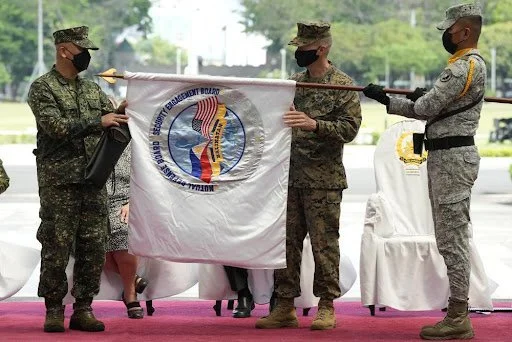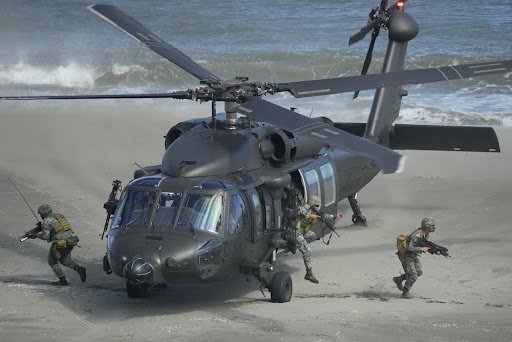The Balikatan Exercises: US-Philippine Relations Deepen
U.S. Exercise Director Major Gen. Jay Bargeron, center, of the U.S. Marine Corps, and Philippines Exercise Director Major Gen. Charlton Sean Gaerlan of the Philippine Navy, left, at opening ceremonies of the Balikatan military exercises, Monday, March 28, 2022. Photo: Aaron Favila/AP Photo
Since March 28, roughly 9,000 American and Filipino soldiers have been conducting the two countries’ most extensive joint military exercises in seven years as part of the annual Balikatan drills. Balikatan, meaning “shoulder-to-shoulder” in Tagalog, is part of the broader military and diplomatic ties between the United States and the Philippines. The two nations have been allies since signing the 1951 Mutual Defense Treaty soon after the American occupation of the archipelago ended in 1946. The treaty requires both nations to come to each other's aid when at war.
Since his election in 2016, Philippine President Rodrigo Duterte has sought to loosen ties with the United States and realign the Philippines with China and Russia. The 2022 Balikatan Drills, which are ten times larger than the drills last year, represent a successful attempt by the US to maintain good relations with the island nation.
“Certainly, the objective of what we’re doing is demonstrating the strength of the alliance as well as the commitment to regional security,” Col. Timothy Brady Jr., the head of the US 3rd Marine Littoral Regiment, told AP.
President Duterte has spent much of his time in office expressing doubts about the United States and its relationship with the Philippines. In 2020, Duterte vowed to limit US military activities in the Philippines by backing out of the Visiting Forces Agreement (VFA), which allows the US to keep rorations of troops in the Philippines. In July 2021, he reversed his position and allowed the VFA to remain in effect.
Allowing this agreement to expire would constrain the United States “by the lack of legal arrangements for their troops to enter the Philippines,” said former Philippine foreign secretary Albert del Rosario. Annulling the VFA would have made it difficult for the two parties to uphold the several other treaties currently in effect, including the 1951 Mutual Defense Treaty.
With the VFA settled, the two nations began the Balikatan drills with little legal ambiguity. The exercises are taking place mostly in the northern and western Philippines, near Taiwan and the disputed South China Sea.
Since 2013, China has unilaterally sought to expand its sovereignty over the sea, claiming a swathe of territory as far south as Malaysia and Brunei, despite The Hague ruling that the claims lacked basis in international law. Beijing and Manila have both claimed the Spratly island chain, which contains significant untapped oil and gas reserves, and is located in strategic shipping lanes.
Filipino Marines stage a mock defensive maneuver on the beaches of northern Philippines from a military helicopter during an annual U.S.-Philippines joint military exercise, Thursday, March 31, 2022. Photo: Aaron Favila/AP Photo
The Balikatan exercises, which involve various offensive and defensive maneuvers on small islands, clearly indicate that the United States and the Philippines are preparing for contingencies if violence erupts in the sea.
“We should indeed improve our preparation for external aggression,” Philippine regional military commander Maj. Gen. Lawrence Mina told reporters. “It’s high time because we never know if we’ll get embroiled in the unfolding events that we’re hearing in the international scene.”
The drills will continue until April 8, and come just one month after the Chinese Coast Guard maneuvered dangerously close to a Philippine vessel sailing near Scarborough Shoal, another contested island in the South China Sea.
After China seized Scarborough Shoal in 2012, the United States deployed its Navy to enforce freedom of navigation in the region and deter skirmishes like the one that occurred last month. US Indo-Pacific commander Adm. John C. Aquilino also announced in March that China had fully militarized three artificial islands in the South China Sea. He stated, “[t]hey have advanced all their capabilities,” reflecting the escalation occurring in the region.


